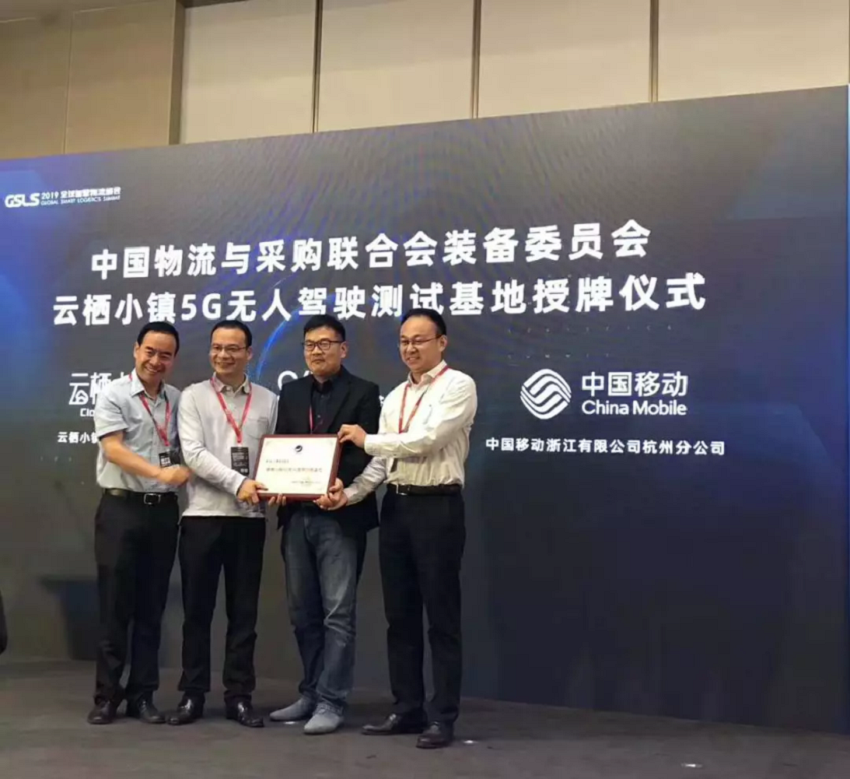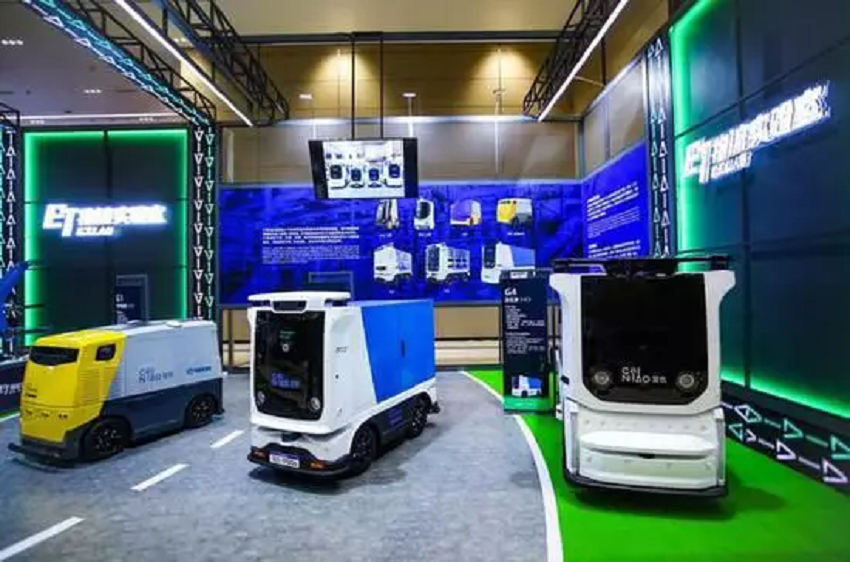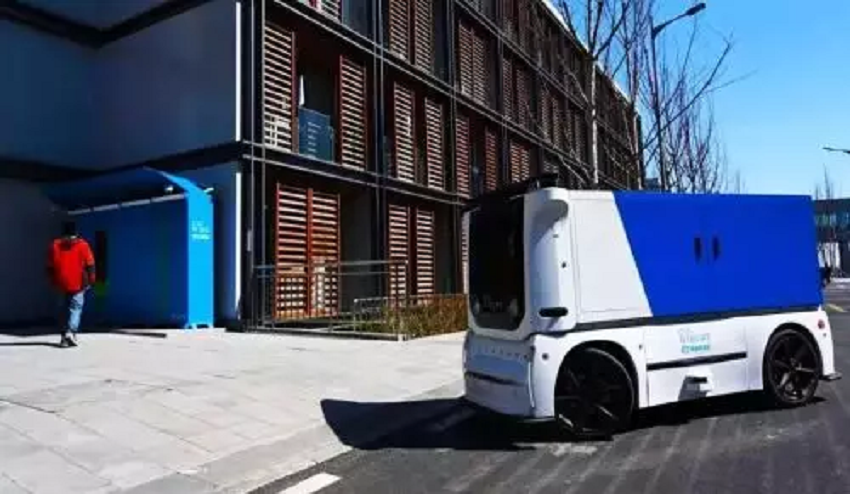5G Unmanned Logistics Vehicles Now Available in Yunqi Cloud Town, Zhejiang
On May 28, the 2019 Global Smart Logistics Summit (GSLS) was held in Hangzhou, China. This year's theme was Driving Digitalization.

During the summit, China Mobile Zhejiang and Cainiao signed a strategic partnership agreement on 5G smart logistics, and demonstrated 5G smart logistics services to the audience. They aimed to use 5G to drive the application of Cainiao's unmanned logistics vehicles and improve the user experience.

Previously, China Mobile Zhejiang had worked with Huawei and Cainiao to build a testing base for 5G unmanned driving in Yunqi Cloud Town. Together, they are committed to autonomous driving research in the 5G era.

In the Yunqi Cloud Town, some staff showcased 5G unmanned vehicles. However, with little traffic and no traffic lights, the road conditions in the town are very different from those found on the open road.
Cainiao boasts cabless, unmanned vehicles. During the demonstration, the vehicles drove at 15 km/h and would automatically brake whenever an obstruction was detected, with the braking distance within 0.2 meters.
Calculations have shown that the entire braking process should be completed within 50ms. This includes uploading obstacle signals to the network, cloud computing and processing, downloading braking signals, and braking. During this process, network latency during signal uploading and downloading must stay within 30ms.

5G enables accurate barrier detection and automatic braking
5G offers an uplink bandwidth of 100 Mbit/s, enabling 4K HD videos recorded by the five cameras on the vehicle to be sent to the network in real time. The network latency is less than 20ms, meaning visual and radar data can be uploaded and braking signals sent instantaneously. This ensures the braking distance of the vehicles is effectively controlled.
New technologies like AI image recognition and cloud computing reduce the hardware costs of unmanned vehicles, but they cannot be effectively used with Wi-Fi. This is due to frequent network interference, disconnections, and packet loss. However, 5G offers high bandwidth, low latency, and high reliability, guaranteeing effective image recognition, cloud computing, AI, and more.
As the labor cost of deliveries continually increase, more and more delivery staff choose to put parcels in parcel lockers instead of delivering them to doors, leaving consumers with an unsatisfactory experience.
5G unmanned vehicles can replace humans in last-mile delivery. Such vehicles can ensure safety and strike a balance between consumer convenience and delivery costs. With 5G unmanned vehicles, consumers no longer need to carry heavy packages from parcel lockers to their front doors, improving customer satisfaction.
As 5G and unmanned vehicles become more deeply integrated, 5G unmanned vehicles will go out of parks to more complex roads. In the future, 5G will make autonomous driving a reality, from 5G remote driving to 5G autonomous driving fleets.
According to Zhejiang's 2019 government work report, the province will take the lead in 5G commercialization this year, aiming to become a benchmark province for the country's digital economy.
China Mobile Zhejiang has long been a leader in 5G adoption, while Cainiao's 5G unmanned vehicles are a perfect example of 5G application in industries.
Looking to the future, China Mobile Zhejiang will continue working with Huawei to achieve industry digitization with new technologies like 5G, cloud computing, and AI. China Mobile Zhejiang aims to enable digital industries, personalized services, and smart experiences, and eventually drive the sustainable growth of the digital economy.
With 5G unmanned vehicles, consumers will no longer need to receive deliveries outside in sweltering heat or heavy rain, and will be able to enjoy the connection of everything at home. This will allow everyone to live more efficiently and have more time to themselves. A connected, intelligent world will start with smart delivery services.